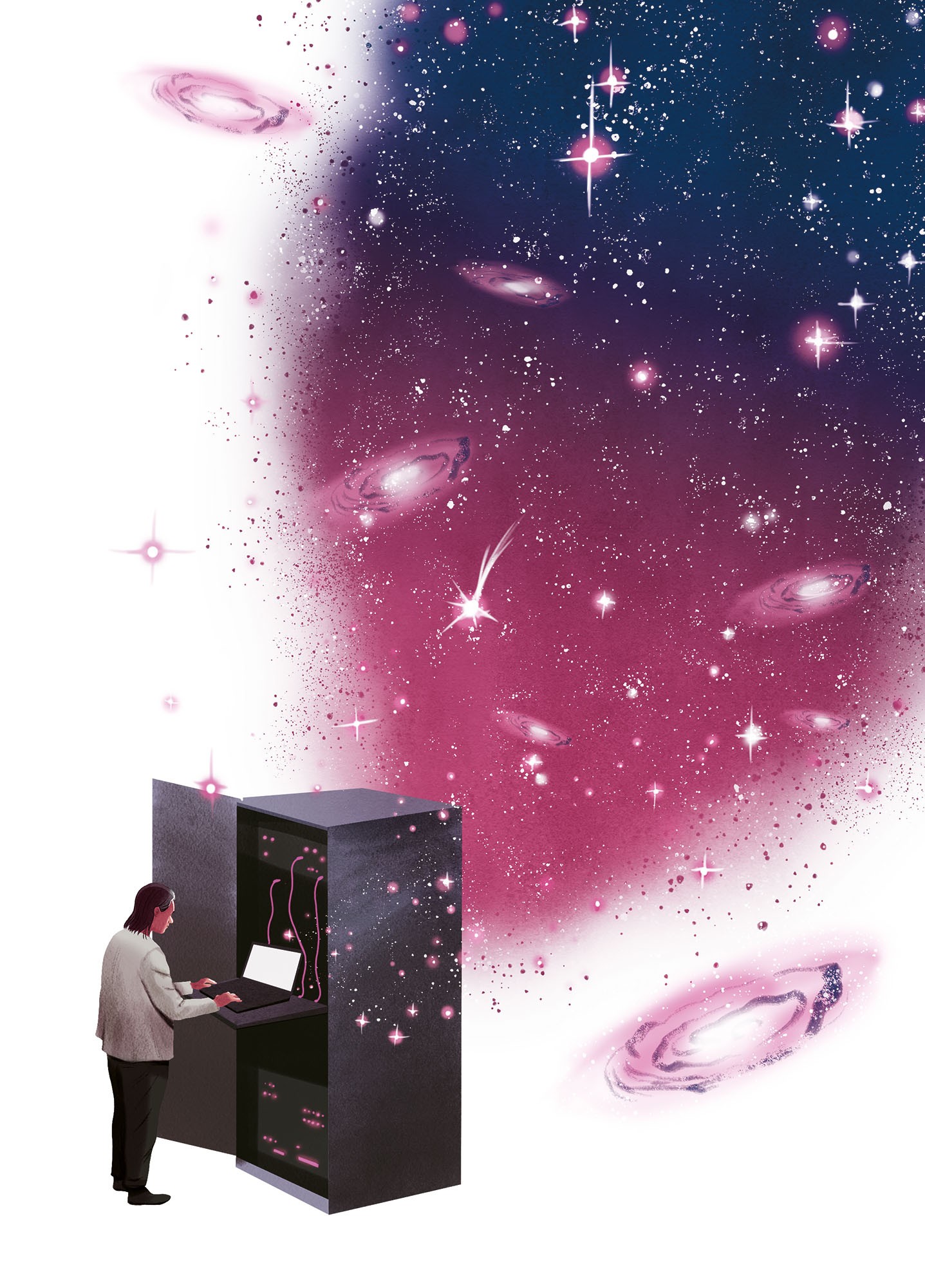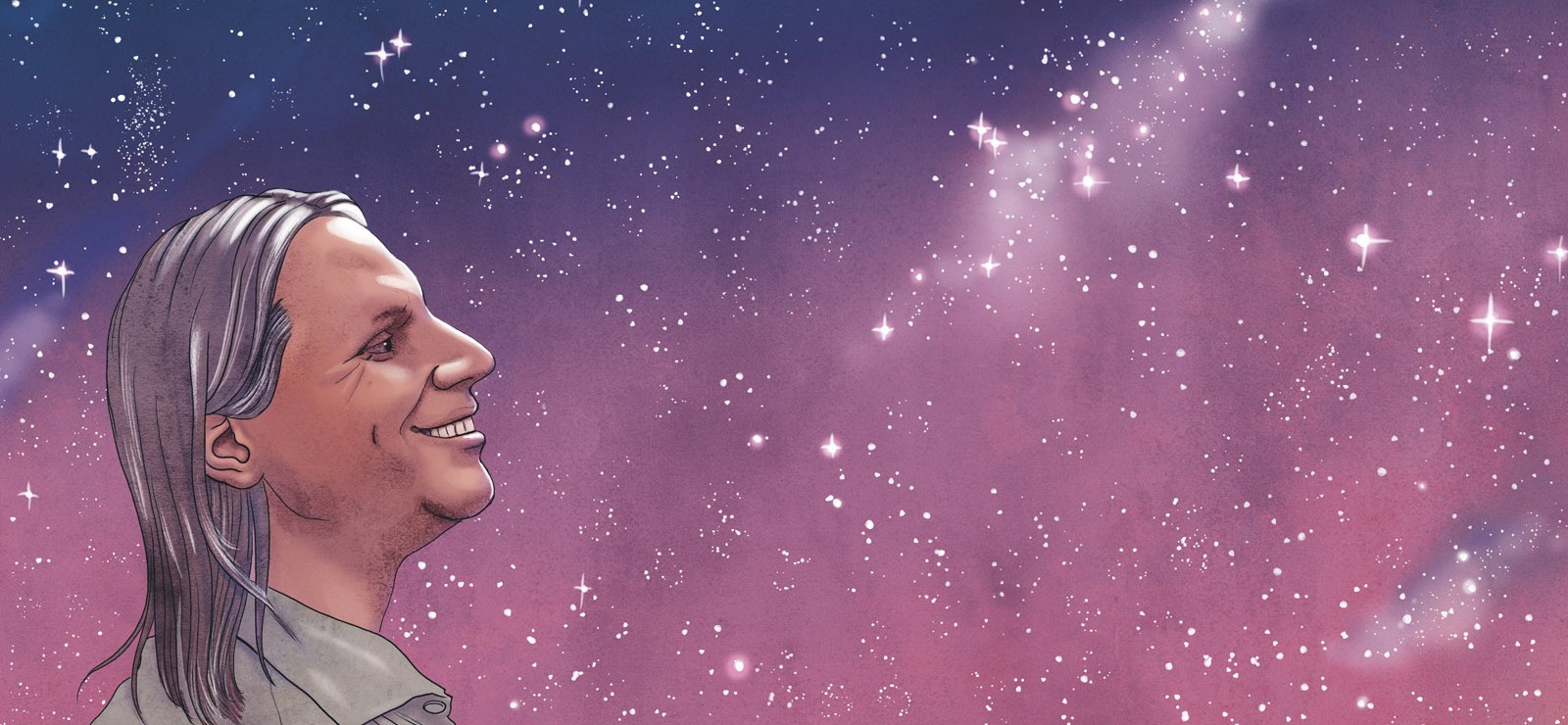You can't literally put them under a microscope, but advanced computer simulations help Maarten Baes study galaxies. A good thing too, because the study of galaxies is a relatively new branch of astronomy and much is still to be discovered.
“Even as a child I was interested in science and nature. I often wondered why something was the way it was. My fascination with stars didn’t start until later, when I was looking for an interesting application for abstract mathematics.”
Maarten Baes is a professor of astronomy and an expert in extragalactic astronomy. In other words, he studies galaxies. In addition, he heads up an international research group that conducts both computational and observational astronomy research.
How did you come to do research on galaxies?
Maarten Baes: “Indirectly. I’ve always enjoyed doing math so I studied math at Ghent University. During my second bachelor I started to feel that pure mathematics wasn’t really it for me and I was actually looking for a field with more applications. That’s why I opted for mathematical physics and astronomy as my main subject, because it makes figures and computations a bit more tangible. For instance, when calculating the gravity of a planet, the figures behind it become very concrete.”
What are you researching right now?
“I am researching the structure, origins and evolution of galaxies. When you look at the universe, it’s like this huge box. In that box there are galaxies, such as our own Milky Way. Those are the basic building blocks of the universe. Within every galaxy there are billions of stars, each with their own planetary systems. I research how those galaxies came into existence, how they evolve over time and why they have different shapes, colours and sizes.”
How do you do that?
“Based on computer simulations that imitate how particles act in the universe and how they have evolved over time, starting with the Big Bang. That is the big difference with other scientists: we can’t study our subjects in a lab environment. The only thing we can do is observe and make computer simulations.”
How are those computer simulations created?
“To simulate space as accurately as possible you enter a variety of parameters ranging from gravity to magnetic fields and chemical processes, such as how gas contracts, cools and forms stars. When you enter all those parameters, the computer does the rest. So we toss the laws of physics into the computer and hope that the result is a galaxy. The numbers we juggle are gigantic, by the way: gravity in black holes, for example, is millions of times stronger than on earth. The universe really is the dream laboratory for a physicist.”

And that gives you an instant image of what a galaxy looks like?
“‘Instantly’ is a bit of a stretch. Super computers will work for months, sometimes even years, to produce a result. That’s because you’re simulating 13.8 billion years, from the Big Bang till now. That is why a number of groups worldwide have pooled their resources to conduct that part of the research together. Our group in Ghent specialises in translating these data into realistic images, like observing them through a telescope.”
How do you do that?
“We use those original simulation data to create different images of the galaxy. For instance, what they look like in the infrared or X-ray range, or when you look at them from a different side. We then compare all the characteristics we see, such as differences in clarity, colours and shapes, with what we observe in the universe. That’s the research area we specialise in at Ghent University.”
That’s how you check whether the simulations are accurate?
“That’s correct. For instance, we see that red galaxies are often massive and have few details. Blue galaxies are not as massive and often have spiral arms. Sometimes in the simulations we see a great deal more blue galaxies than we observe in real life. When that happens we have to adjust the parameters. We share our feedback with the makers of the simulations so they can adapt variables and make the simulations even more accurate.”
You’re making a kind of reference picture of a galaxy?
“Something like that. Based on the simulations we create a kind of picture of what the galaxy may look like. We compare those images with the actual pictures we take of the galaxies.”
What is the ultimate goal of your research?
“On the one hand we want to know how the universe evolves. On the other hand we obviously want to study how the galaxies themselves evolve in the universe. Extragalactic astronomy, the study of galaxies, is actually only one hundred years old. Before that we didn’t even know there was such a thing as galaxies. Back then we still thought that the Milky Way and the universe were the same thing.”
So much is still to be discovered?
“Yes, absolutely. There is so much we don’t know yet. We are a long way from answering the ultimate question: where do we come from? Fortunately the constant development of new technologies is a big help. When the James Webb telescope was launched several years ago - with a contribution by UGent researchers by the way - we once again pushed the boundaries of what we can see and study. We can now see things we’ve never seen before. It’s fascinating.”
Are you still able to look at the stars without seeing the science behind it all?
“((laughs)) “Yes, fortunately. I don’t see ones and zeros when I look at the stars. The beauty still amazes me. And space continues to fascinate me. Did you know that new stars are still being born? Up to five new stars are formed in our own Milky Way every year. My knowledge of what’s behind it all doesn’t detract from the magic. Perhaps the opposite: it makes it even more beautiful.”
Maarten Baes is professor of astronomy and an expert in extragalactic astronomy. He heads up an international research group that conducts both computational and observational astronomy research. His favourite spot at Ghent University: the stretch of grass on top of Public Observatory Armand Pien. A small stretch of lawn on the roof of the Rozier, under the antique Van Monckhoven telescope from 1880 and with a unique view of the towers of Ghent.
Read also
The world's largest telescope might be built in Belgium
Europe wants to build a telescope to look back at the origins of the universe. The mile-long structure might come to Belgium. Archisman Ghosh of Ghent University's Faculty of Sciences is eagerly looking forward to it.

